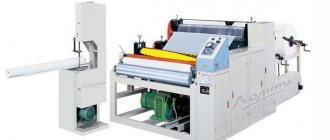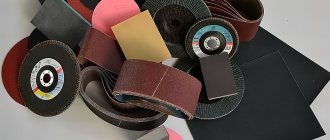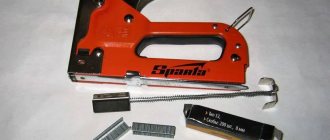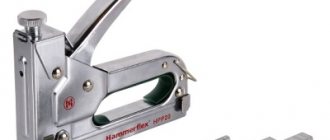Any person strives to surround himself with many little things that provide him with a comfortable existence. This desire often manifests itself in relation to personal care products that are used repeatedly throughout the day. In addition to shampoo, toothpaste and soap, their list also includes toilet paper.
At the same time, the availability of technology allows even a novice entrepreneur to organize his own production of toilet paper: the business plan of such an enterprise may include both manufacturing products from scratch and cutting the finished paper web. Economic calculations show that the first option has the highest profitability, but a beginner planning to implement it needs to be prepared to invest several million rubles in the business.
Business Features
Modern consumers are accustomed to the convenience of using toilet paper. According to rough estimates, the average family uses one or two rolls per week. Accordingly, in a city with a population of 300 thousand people, at least 100–150 thousand rolls are sold weekly, which in monetary terms is 1.5–2.5 million rubles.
At the same time, the greatest competition is observed in the segment of high-quality imported products and expensive multilayer products from large domestic factories, while the niche of budget products is divided between two or three local manufacturers. Taking advantage of this situation, a novice entrepreneur can set up his own workshop for the production of inexpensive toilet paper and occupy a fairly prominent place in the regional market.
Before implementing this business idea, you need to evaluate your financial and organizational abilities, and then choose the appropriate enterprise format:
- Incomplete cycle. The raw material used is a ready-made base for the production of toilet paper, which is supplied in the form of large reels 140–170 cm wide and weighing up to 300 kg. In this case, the list of workshop equipment is limited to machines for rewinding webs, cutting rolls and packaging finished products;
- Full cycle. The company independently produces raw materials for toilet paper by processing waste paper or cellulose. This option for organizing a business is the most profitable, but at the same time the most expensive: the cost of the simplest production line starts at two million rubles.
When thinking about what kind of production can be opened in 2022, many entrepreneurs pay attention to the positive aspects of such a business:
- Products of any price category are goods of everyday use and, with good sales organization, are sold in large volumes;
- The shelf life of products is practically unlimited, so the manufacturer and seller do not have to worry about delays and write-off of substandard balances;
- If sales channels are available, significant investments in the purchase of machines for the production of toilet paper pay for themselves within a year;
- Raw materials cost literally pennies, which allows you to set a high markup on finished products, sometimes reaching 400–500%.
On the other hand, making money from the production of personal hygiene products also has some disadvantages, which also should not be forgotten:
- Due to the ease of toilet paper production as a business, there are already a huge number of businesses of varying sizes operating in the industry;
- To launch a workshop, it is necessary to invest several million rubles in purchasing and setting up a production line.
Profitability and payback period of the business
Having understood all the production nuances, you can draw up a rough business plan and consider the payback period.
To start a business from scratch you will need start-up capital. You can give an example of a rough business plan for aspiring entrepreneurs.
One-time financial investments.
- Registering a business and obtaining a license - 150,000 rubles.
- Purchase of equipment - from 1,200,000 rubles.
- Repair and arrangement of the workshop - about 200,000 rubles.
Total expenses: 1,550,000 rubles.
In addition, it is worth considering the monthly cost line.
- Rent of premises - on average 75,000 rubles.
- Workers' wages start from 200,000 rubles.
- Purchase of raw materials - 500,000 rubles.
- Unforeseen circumstances - 60,000 rubles.
Total monthly expenses: 835,000 rubles.
For 500,000 rubles you can purchase 30 tons of waste paper, which will yield 272,500 rolls of toilet paper. The cost price is 1.5 rubles, but the minimum wholesale price is 3.7 rubles. That is, when selling all products, you can get 1,008,250 rubles. After deducting expenses, the project profit will be 208,250 rubles.
All calculations are approximate. At first it is impossible to sell all the products. In the worst case scenario, it will be possible to recoup the investment after a year and a half; in the best case, it will take only six months. After which the company will bring a good monthly profit.
Types of toilet paper
As a personal hygiene product, toilet paper appeared in China about one and a half thousand years ago.
But this product became widespread only in the mid-19th century, when an enterprising businessman from New York offered the market an inexpensive product in the form of square sheets packaged in packs. Another fifty years later, other American manufacturers first produced the product in rolls. Since then, toilet paper technology has advanced significantly. The modern product has acquired such useful characteristics as:
- Perforation, making it easier to tear sheets off the roll;
- Ability to absorb moisture well;
- Low density in the range of 20–35 g/m²;
- Low strength and loose structure;
- Rapid destruction in an aquatic environment;
- No harmful dyes.
Today, two types of raw materials are used in the production of toilet paper, which significantly affect its consumer qualities.
Such materials include:
- Waste paper. Recycled paper has a stiffer structure and a grayish tint. Products made from it have the lowest cost;
- Cellulose. Fluffy cellulose fibers are used to make soft white paper with a multi-layer structure. These products are comfortable and safe.
Nowadays, it is difficult to seduce a consumer accustomed to abundance with the low price of toilet paper made from waste paper or the high quality of goods made from cellulose. Therefore, in the struggle for sales, manufacturers had to think about additional competitive advantages of their products, which were:
- Decoration. To obtain a more attractive appearance, some manufacturers add dyes to the raw material or cover the surface of toilet paper with various patterns, ornaments, embossing and corrugation;
- Aromatization. Treating a product with pleasant-smelling fragrances is another marketing technique used by manufacturers. To avoid allergic reactions, only the bushing is impregnated with the aromatic composition.
Types of manufactured products
You need to buy equipment and plan your budget based on what products you plan to produce .
It could be:
- regular toilet paper with or without a core;
- colored, corrugated, embossed, flavored, multi-layer paper and napkins, including exclusive types of products;
- corrugated paper towels with a sleeve;
- sheet paper towels.
Having decided on the type of product to be manufactured, you can roughly calculate the cost of its production.
Raw materials for toilet paper
Of course, cellulose toilet paper not only looks attractive, but also has important consumer advantages - softness, comfort, and hygroscopicity.
However, a novice entrepreneur does not always have the opportunity to find reliable suppliers of high-quality material, and therefore it is more advisable to start a small business by processing more affordable waste. Almost any waste paper is used as a raw material for the production of toilet paper, which dissolves well in water and does not contain insoluble residue in the form of spines, hard covers or polymer coatings. According to GOST 10700–97, suitable paper waste is classified as follows:
- MS-1A. Waste white paper (except for newsprint), writing paper, whatman paper, drawing and sketching paper. Price - from 8,000 to 12,000 rubles/t;
- MS-2A. Waste white paper, writing paper, ruled or striped forms, drawing or drawing paper with markings. Price - from 6,500 to 10,000 rubles/t;
- MS-5B. Waste corrugated cardboard, packaging from household appliances. Price - from 4000 to 8000 rubles/t;
- MS-6B. Waste of printed household cardboard (with the exception of shoe, roofing or electrical cardboard). Price - from 4000 to 8000 rubles/t;
- MS-7B. Old books, magazines, booklets, posters, notepads and other items with printing, without spines or covers. Price - from 5000 to 9000 rubles/t;
- MS-8V. Newsprint paper, old and new newspapers with a print density of no more than 5%. Price - from 3500 to 7000 rubles/t.
The mini plant processes a large volume of raw materials per day. Accordingly, even when making toilet paper at home, an entrepreneur must responsibly approach the issue of uninterrupted supply of waste paper to production. There are two options to solve this problem:
- Find suppliers. Entrepreneurs who own waste paper collection points usually cooperate with wholesale resellers. Large networks can work directly with factories. It's worth trying to offer them a higher price;
- Open your own collection point. If you open a pavilion for receiving waste paper, you can avoid dependence on intermediaries and receive raw materials on favorable terms. To organize a collection point, it is enough to have a garage and a car.
In addition to waste paper, other components are also used in the production of toilet paper - special harmless glue, cardboard for the production of sleeves, labels in rolls and plastic film for packaging.
Production stages
In the process of making toilet paper today, the following operations are performed:
- Preparation of raw materials: paper pulp is sorted and crushed into small fragments using crushers and mills
- Feeding paper pulp into the pulper: the raw material is mixed with hot water and ground, cleaned of impurities and foreign objects using vortex traps
- Processing of a water-paper solution using a paper-making machine: the mass is passed through the headbox of the machine, where it is pressed, and excess liquid is removed by gravity
- Feeding the mass onto the mesh table and pre-squeezing
- Dehydration of paper web using vacuum
- Heating of the web in a special drum followed by creping
- Drying the fabric
- Bobbin winding
- Cutting and packaging
The capabilities of modern equipment allow us to produce from 500 kg to 3000 kg of finished products per day within a small plant.
Toilet paper production technology
To properly organize the work of an enterprise and optimally select machines, a businessman must study the technology of toilet paper production. The process looks like this:
- Waste paper is loaded into a receiving tank and filled with clean water. In order for the raw material to become saturated and sour, the mass is stirred periodically;
- The paper soaked in water is sent to a pulping plant, where under the influence of jets of water it turns into a homogeneous suspension;
- The mass is filtered through a sieve to remove debris, metal parts and undissolved fragments;
- The raw material enters the paper pulp preparation tank, where it is additionally enriched with water to a given concentration;
- The finished mass is poured into a receiver, which provides a continuous supply of raw materials for the papermaking machine;
- In the paper machine, the suspension is laid out on a conveyor mesh table, which transfers it to the area of the squeezing and sizing rolls;
- Excess water flows through the mesh into the pit, and the wet paper pulp is glued to a cloth conveyor, which transfers it to the dewatering and drying area;
- The drying drum is evenly heated to 110°C, as a result of which the tape loses 60–70% of moisture. Steam is removed with an exhaust hood;
- In the creping zone, the tape is separated by a special knife from the drying drum and falls onto the felt, where it is pressed by the drying drum;
- The finished paper web is supplied to the receiving device and wound into reels with a width of 140 to 170 cm (depending on the type of equipment);
- The reel is installed in an unwinding machine, which rewinds it into logs - rolls of the same width with a thickness equal to the thickness of the finished roll;
- At the same stage, if necessary, multilayer paper is glued or embossed on its surface;
- A label is glued onto the finished log, after which it is cut on a belt or disk machine into rolls of a given width;
- Rolls with labels are packed in boxes or sealed in polyethylene, 4–12 pieces each. Finished products are transported to the warehouse.
Wood processing
From the very morning, spruce wood begins to be delivered to the plant. It is delivered here by rail from all over north-west Russia - from Karelia, Arkhangelsk, Vologda. The wood is unloaded and stacked in stacks at the “exchange” - the place where raw materials are stored.
Here trunks with a diameter of up to 70 centimeters await their turn. They are not suitable for furniture production. But they are just right for paper. The “sawmill” comes into operation - the area where the logs undergo primary processing. They are divided into parts and sent to the wood preparation shop. The debarking drum begins to make noise. So much so that you can’t hear your own voice. Therefore, the workers here exchange gestures - turn it on, turn it off, add power. Water is supplied to the drum. Under its pressure, the trunks rub against each other, the bark is removed. Smooth and clean - the tree remains in this form for just a few minutes. Further along the conveyor it goes to the chipping machine. The output is local “gold” – wood chips. Almost three thousand cubic meters of chopped wood is stored in the open area of the plant. The standard is chips 25 millimeters thick, no more and no less. After sorting, the pulp base is sent to the digester. The first stage is completed.
Business registration
What is better for the production of toilet paper - LLC or individual entrepreneur? This business does not imply the presence of any legislative restrictions, and therefore it is wiser to use a cheaper and simpler form - individual entrepreneurship. The following OKVED code is suitable for classifying the type of activity of an enterprise:
OKVED code for toilet paper production
| 17.22 | Production of paper products for household, sanitary and hygienic purposes |
During the registration process, the entrepreneur must indicate his preferred taxation system. Enterprises with up to 15 employees have the right to apply a patent at a fixed rate of 7,400 rubles per month. But for a larger workshop, the optimal simplified tax system is 15% of the difference between revenue and expenses.
When preparing a package of documents for an enterprise, you should also take into account that sanitary and hygienic products are subject to certification. To produce toilet paper in Russia, it is necessary to issue a Certificate of State Registration, and then obtain a Declaration of Conformity GOST R. In addition to these certificates, an entrepreneur will also need officially registered barcodes to sell their products through retail chains.
But you don’t need a license to make toilet paper from waste paper. The fact is that the processing of recyclable materials of hazard classes I–IV requires licensing, while paper waste belongs to class V. However, to avoid problems, you should obtain a certificate from Rosprironadzor indicating the class of materials used.
Giant rolls
The production of cellulose is the next stage at the plant. This is a closed and continuous process. The boilers here smoke around the clock. Their work is monitored using monitors. Pressure and temperature indicators are displayed on the screens. The heat inside the boilers rises to 155 degrees. Soda, sulfur and the “secret ingredient” – bisulfite acid – are added to the wood chips. It gives the paper softness and fluffiness. When the pulp is ready, it looks like a pureed apple. Within eight hours it is bleached and free of chemicals. The resin is removed so that the canvas does not stick to the shafts later. Now water is pumped out of the mass using a pump. Then the local “loom” - a paper-making machine - comes into operation. It is on it that a thin layer of future products is formed. The cruising speed is almost one kilometer per minute.
This makes a four-meter roll. This is “base paper” - it will later be used to make napkins, paper towels and other products. The color depends on the dye. Mostly pastel shades are used here. The most popular are turquoise and yellow. Workers at the enterprise use a remote control to control a crane with hooks. They remove the giant from the car and give him a ceremonial flight over the workshop. Now the product needs to be “reduced”, cut into formats, and sealed. Some of the rolls will be sent to customers from the Czech Republic, Germany, and Belarus. The rest will be left at the plant for the final stage in the sanitary products workshop.
Preparing the premises
When looking for a place to locate a workshop, you must be guided by sanitary standards, which require a distance of 100 m to the nearest bodies of water and residential buildings. Therefore, it is better for an entrepreneur to use some kind of hangar or warehouse on the outskirts of the city, where the rent does not exceed 200–300 rubles/m² per month.
To set up an enterprise with a capacity of 2–5 tons of products per day, a room with an area of 150 m² is sufficient: toilet paper production lines designed specifically for small businesses are small in size. The workshop space should be divided into:
- Waste paper acceptance and storage area;
- Warehouse for packaging and other raw materials;
- Production area;
- Warehouse of finished products;
- Administrative and service premises.
When preparing a workshop for the production of toilet paper, it is necessary to fulfill certain requirements imposed by manufacturers of technological equipment and various regulatory authorities. So:
- For the correct placement of machines, the length of the production room must be at least 15 meters;
- Installation of the paper machine and the exhaust hood above it requires a ceiling height of at least 4 meters;
- The energy consumption of steam equipment for making toilet paper is 55 kW. The power of electric mini-factories is from 135 kW;
- The supply power line must provide power to machines and devices with voltages of both 220 V and 380 V;
- The workshop must be connected to water supply and sewerage, which will ensure the supply and removal of water in a volume of at least 3 m³ per day;
- The air temperature in the production area at any time of the year should not fall below 16°C and rise above 25°C;
- The exhaust hood above the paper machine must provide effective removal of water vapor;
- The workshop foundation is poured in accordance with the equipment manufacturer's diagram. A recycling water supply pit with a volume of 5–8 m³ is installed in the floor;
- The production of toilet paper from waste paper is considered a fire hazard, so the workshop is equipped with a fire extinguishing system and fire extinguishers.
Material and technical base
To organize a full cycle production, it is necessary to purchase a line for the production of toilet and napkin paper bases from waste paper and equipment for winding and cutting rolls, as well as a packaging machine. If necessary, you can buy a machine for making cardboard sleeves. The cost of the main line starts from 7 million rubles, depending on productivity. It usually includes the following elements:
- Vibrating sieve
- Disc mill
- Washing plant
- Impurity cleaners and knotters
- Pulper
- Vacuum pumps
- Press rollers
- Paper feeding system
- Grid table
- Cloth conveyor
- Heating drum
- Cleaning scraper
- Tanks and water collectors
The standard length of an installed line is about 15 m, the width is about 3 m, the height varies from 3 to 5 m. Paper making machines can be electric or steam. Electric power consumption ranges from 160 to 200 kW/hour, steam – up to 40 kW/hour.
The standard width of the paper web produced at the output is 1250 mm, weight – from 28 to 35 g/cubic. m. To obtain rolls from such fabric, you need a bobbin-unwinding machine and a cutting machine. The cost of equipment for unwinding and cutting usually does not exceed 1 million rubles. An automatic packer will cost about 500 thousand rubles, a sleeve machine – about another 500 thousand rubles.
By the way, if the entrepreneur’s budget does not allow organizing a full-cycle production, then you can purchase separately equipment for producing rolls from finished raw materials (paper base).
So, having spent about 2 million rubles on technical equipment, you can buy paper in rolls (reels) and produce toilet paper and kitchen towels from it literally at home. After all, such equipment, unlike a paper-making line, does not require water supply and drainage and can operate from a regular network with a voltage of 220 V. It is useful to read what kind of production can be opened in a garage.
Equipment for the production of toilet paper
Finding equipment for the production of toilet paper is not difficult - there are models of both Russian and Chinese production on the market.
Domestic lines have a higher cost, but their manufacturers include installation, commissioning and warranty service in their offers. So how much do toilet paper machines cost? A budding entrepreneur should pay attention to inexpensive units from the Omsk Paper Mill. For example, a steam line for recycling waste paper with a price of 2.2 million rubles has the following technical characteristics:
- Line capacity - 2000 kg/day;
- Energy consumption - 35.7 kW;
- Low pressure steam consumption - 300 kg/hour;
- Clean water consumption - 3000 l/day;
- Maintenance personnel - 4 people per shift.
The equipment specification for a mini-plant built on the basis of the specified line may look like this:
Equipment for paper production
| Name | price, rub. | Quantity, pcs. | Amount, rub. |
| Mini steam plant included: | 2200000 | 1 | 2200000 |
| Pulper | – | 1 | – |
| Return water pump | – | 1 | – |
| Waste paper pump | – | 2 | – |
| Paper making machine | – | 1 | – |
| Rewinding machine 1400 mm | – | 1 | – |
| Roll cutting machine | – | 1 | – |
| Optional equipment | |||
| Steam generator | 158000 | 1 | 158000 |
| Bushing machine | 94500 | 1 | 94500 |
| Packaging machine | 130000 | 1 | 130000 |
| Paper pulp preparation tank 5 m³ | 110000 | 1 | 110000 |
| Tank of finished paper pulp 15 m³ | 160000 | 1 | 160000 |
| Clean water tank 5 m³ | 90000 | 1 | 90000 |
| Ventilation dome | 40000 | 1 | 40000 |
| Pipelines and valves | 30000 | 1 | 30000 |
| Warehouse scales | 20000 | 1 | 20000 |
| Pallet truck | 15000 | 1 | 15000 |
| Fire extinguishing system | 50000 | 1 | 50000 |
| Fire extinguisher | 3500 | 4 | 14000 |
| Switchboard | 6500 | 1 | 6500 |
| Total: | 3118000 | ||
In addition, production cannot operate effectively without administrative staff. Therefore, in addition to purchasing machines for making toilet paper, an entrepreneur should take care of arranging workplaces for the director, accountant and sales manager. For these purposes you need to purchase:
Other equipment
| Name | price, rub. | Quantity, pcs. | Amount, rub. |
| Office table | 3200 | 3 | 9600 |
| Chair | 750 | 10 | 7500 |
| Computer | 20500 | 3 | 61500 |
| Printer | 6600 | 1 | 6600 |
| Telephone | 1250 | 2 | 2500 |
| Router | 2000 | 1 | 2000 |
| Stationery | – | – | 6000 |
| Document rack | 3300 | 1 | 3300 |
| Meal table | 1500 | 1 | 1500 |
| Wardrobe | 2500 | 3 | 7500 |
| Total: | 108000 | ||
Main characteristics of the mini-plant
If we consider the option of a full production cycle with the stage of recycling waste paper, then such a complex will consist of the following components:
- equipment for preparing paper raw materials:
Schematic view of lines for the production of toilet paper; pulper mechanism; - pumps for pumping water;
- pump-mill;
- headbox;
- pressing part;
- heating drum;
- drying conveyor;
Paper making machine
- bobbin rolling machine;
Enterprise employees
Of course, even a small workshop cannot be compared with a mini-production in a garage employing two or three people: just servicing a paper-making machine requires hiring at least four specialists. Unfortunately, in the regions it is not always possible to find employees with experience working on similar equipment, as a result of which the entrepreneur will have to think about the prospects for additional training for people with technical education. In general, the enterprise needs:
- Shift Supervisor. Coordinates the work of production personnel, checks the quality of raw materials and finished products, monitors the correct operation of process equipment;
- Production workers. Their tasks include loading waste paper, servicing machines for the production of toilet paper, winding cardboard cores, cutting blanks into rolls, packaging finished products;
- Support workers. They are engaged in the delivery of raw materials to the installation, delivery of finished products to the warehouse, maintenance and refueling of the steam generator, loading and unloading of the company’s vehicle;
- Storekeeper. Receives and weighs raw materials delivered from suppliers, keeps records of the consumption of fuels and lubricants and packaging, and issues finished products to the warehouse;
- Delivery driver. Brings raw materials from suppliers and delivers finished products to wholesale buyers, shops and supermarkets;
- Sales Manager. Searches for wholesale buyers, enters into cooperation agreements with them, and controls accounts receivable;
- Accountant. Maintains financial records, calculates salaries, submits necessary documents to the tax service and funds.
To produce toilet paper in two shifts, it is necessary to form two teams of workers. Accordingly, the staffing schedule of the workshop will take the following form:
Enterprise employees
| Job title | Rate, rub. | Qty | Amount, rub. |
| Shift Supervisor | 22000 | 2 | 44000 |
| Plant maintenance worker | 18000 | 8 | 144000 |
| Worker on a bushing machine | 18000 | 2 | 36000 |
| Worker at packaging machine | 18000 | 2 | 36000 |
| Helper worker | 16000 | 4 | 64000 |
| Storekeeper | 16000 | 2 | 32000 |
| Delivery driver | 20000 | 1 | 20000 |
| Sales Manager | 23000 | 1 | 23000 |
| Accountant | 23000 | 1 | 23000 |
| Payroll tax | – | – | 126600 |
| Total: | 23 | 548600 | |
Location
The production location can be any.
The main thing: the workshop area is at least 150 square meters. m, ceilings - from 4 m, electricity, water supply and sewerage. The entire premises will be divided into three zones: the workshop itself with machines, a warehouse for raw materials and a warehouse for finished products. Convenient access and egress is welcome.
Promotion and sales of products
As a business, the toilet paper industry requires promoting its own brand. The image of any brand consists of a memorable name, logo and bright, eye-catching packaging. In addition to developing the visual component, you need to work on the product range. The initial data necessary for this can be obtained by studying the local market and identifying the types of products most in demand among the target audience.
No less important for the mini-production of toilet paper is the organization of sales: in fact, the workshop must sell one and a half to two tons of products per day. Therefore, when developing a strategy, you should focus on wholesale buyers: you can interest them with the help of dumping prices and discounts when ordering large volumes of goods. To find such partners use:
- Cold calls. You need to call every day the heads of all distribution companies, wholesale warehouses and warehouses in the region, offering them profitable cooperation;
- Newsletters. Commercial offers should be sent to both prepared and unprepared clients using regular and e-mail;
- Publication of advertisements. It is necessary to place information about your products in special catalogs for wholesalers;
- Negotiation. It is recommended to negotiate with the owners of retail chains and supermarkets about including their products in the assortment of their outlets.
Marketing
Remember: your main buyer now is not a housewife who walks between the aisles in the supermarket, but a large wholesaler. He doesn’t need to be lured by bright, creative advertisements.
It is much more effective to use the usual, simple and effective, like a corkscrew, method: pick up the phone and start calling all the familiar wholesale bases. E-mail newsletters and advertising blocks in printed catalogs for wholesalers are included.
No, of course, housewives and retailers shouldn’t forget either: the product must be attractive to the consumer, memorable in the memory and delight everyone with its quality in order for it to be well bought. But, if we are talking specifically about production, our first goal is to gain trust from wholesalers. Leave TV advertisements and mail.ru banners for later.
How much does it cost to produce toilet paper?
To draw up a business plan for the production of toilet paper, it is necessary to estimate the total amount of investment in the enterprise, not forgetting the purchase of raw materials for work, payment for certification procedures and installation of equipment:
Investments in toilet paper production
| Name | Amount, rub. |
| Enterprise registration | 800 |
| Opening a bank account | 2600 |
| Rent during installation of equipment 150 m² | 60000 |
| Preparing the premises | 60000 |
| Technological equipment | 3118000 |
| Other equipment | 108000 |
| Delivery and installation of equipment | 220000 |
| Certificate of state registration | 29000 |
| GOST Certificate of Conformity | 6000 |
| Receiving barcodes | 5500 |
| Gazelle car | 430000 |
| Diesel fuel for steam generator 7040 l | 208500 |
| Fare | 30000 |
| Waste paper 37 t | 332640 |
| Glue Dextrin 924 kg | 92400 |
| Cardboard for sleeve 2640 kg | 84480 |
| Paper label 528 kg | 68640 |
| Plastic packaging | 49500 |
| Household expenses | 10000 |
| 60000 | |
| Connecting utility networks | 25000 |
| Total: | 5001060 |
The total amount looks quite impressive for a beginner. Unfortunately, even strict savings cannot reduce it by more than a million rubles, and therefore it is better for an entrepreneur who is strapped for money to consider other ways to earn money and think about what kind of production to open with minimal investment at home with little capital.
Moreover, in the process of work, you also have to make many payments every month. When calculating the amount of regular costs, it is important to remember that in addition to raw materials and packaging, the enterprise needs fuel, water and electricity: Video on the topic
Toilet paper production costs
| Name | Amount, rub. |
| Salary Fund | 548600 |
| Account management | 1500 |
| IP contributions | 2700 |
| Rent 150 m² | 30000 |
| Electricity 12320 kWh | 75000 |
| Water supply 44 m³ | 3000 |
| Diesel fuel for steam generator 7040 l | 208500 |
| Fare | 30000 |
| Waste paper 37 t | 332640 |
| Glue Dextrin 924 kg | 92400 |
| Cardboard for sleeve 2640 kg | 84480 |
| Paper label 528 kg | 68640 |
| Plastic packaging | 49500 |
| Dryer cloth | 5000 |
| Household expenses | 10000 |
| 50000 | |
| Total: | 1591960 |
How much can you earn from toilet paper?
How much can you earn from toilet paper? To calculate the gross profit of an enterprise, it is necessary to estimate the total volume of production:
- Without violating the requirements of GOST 52354-2005, it is possible to produce rolls 50 m long and 10 cm wide. The weight of one product will be 140 grams;
- With an equipment capacity of 2 tons/day, a mini toilet paper manufacturing plant operating in two shifts will produce 12,000 rolls per day;
- With a working month of 22 days, the output volume will be 264,000 units;
- The assortment will consist of a roll without a sleeve with a wholesale price of 6.50 rubles, and packed in polyethylene in 4 pieces. roll on a sleeve with a wholesale price of 8.60 rubles.
If the workshop produces both types of products in equal proportions, then the monthly output of the enterprise will be:
Workshop production volumes
| Product type | Per day, tons | Per day, pcs. | Per month, pcs. | Wholesale price, rub. | Revenue, rub. |
| Toilet paper without core | 0,84 | 6000 | 132000 | 6,50 | 858000 |
| Toilet paper on a roll | 0,84 | 6000 | 132000 | 8,60 | 1135200 |
| Total: | 1,68 | 12000 | 264000 | – | 1993200 |
To determine the profitability of a business, it is necessary to calculate the material cost of producing toilet paper from waste paper:
Cost of toilet paper
| Type of raw material | Price | Coreless paper | Paper on a sleeve | ||
| Consumption | price, rub. | Consumption | price, rub. | ||
| Waste paper base | 9 RUR/kg | 140 g | 1,26 | 140 g | 1,26 |
| Paper label | 130 rub./kg | 2 g | 0,26 | 2 g | 0,26 |
| Glue Dextrin | 100 rub./kg | 2 g | 0,20 | 5 g | 0,50 |
| Cardboard for sleeve | 32 RUR/kg | – | – | 20 g | 0,64 |
| Pack of 4 rolls | 1.5 RUR/pcs. | – | – | 0.25 pcs. | 0,375 |
| Total: | 144 g | 1,72 | 167 g | 3,035 | |
Of course, the initial investment in the production of toilet paper looks quite impressive, but with a high markup on the finished product, this investment pays for itself in just 14–15 months:
Payback of toilet paper production
| Name | Meaning |
| Gross income, rub. | 1993200 |
| Expenses per month, rub. | 1591960 |
| Profit from sales, rub. | 401240 |
| Tax simplified tax system, rub. | 60186 |
| Net profit, rub. | 341054 |
| Profitability, % | 21,4 |
| Investments, rub. | 5001060 |
| Payback period, months | 14,6 |
Advantages and disadvantages
The advantages of this business are that:
- You will quickly return the money you invested.
- The demand for personal hygiene products , namely toilet paper, is always high.
- Quite low production costs.
- Regular income.
As with any business, there are also disadvantages:
- There is quite a lot of competition in this area , so it will be difficult to find a sales market.
- You will have to spend money to set up a business: registration costs, equipment, raw materials.











